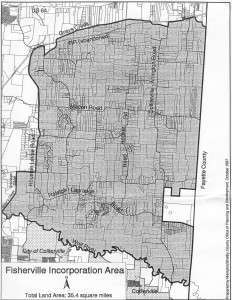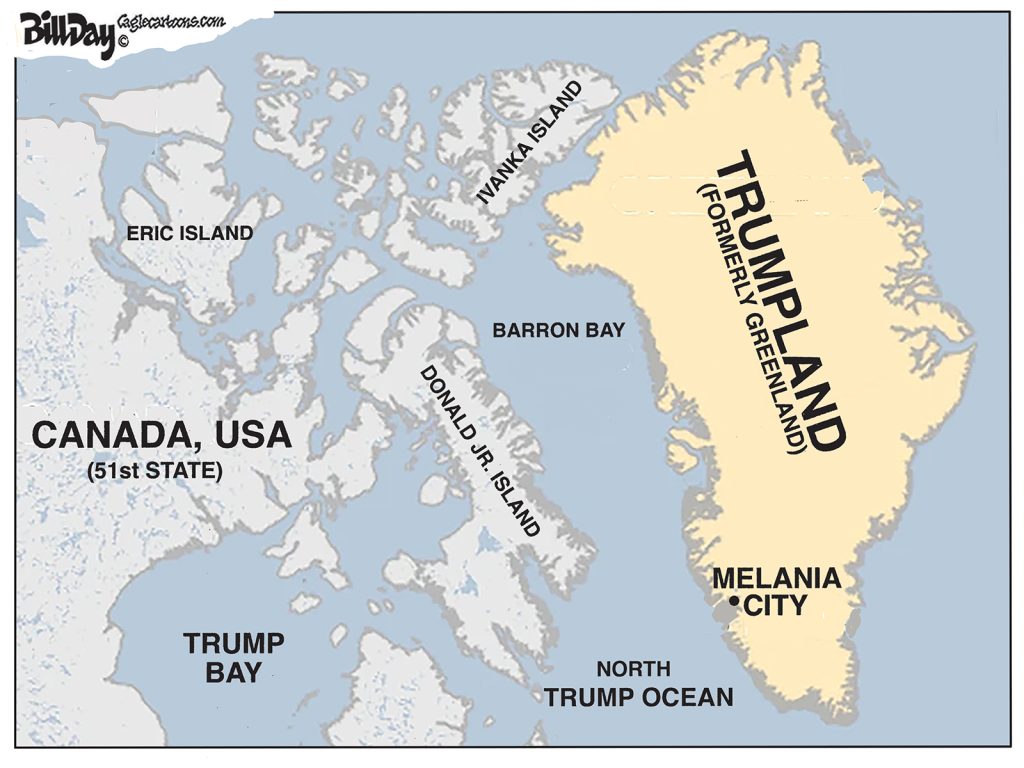In my last post, I discussed the fallacy of a city – any city – approving new developments at its periphery when all available evidence shows that said developments, be they residential or retail, are simply cannibalizing existing neighborhoods and businesses elsewhere in that city. This is precisely what is occurring in Fisherville, the large swath of land from Wolf River north to Grays Creek and from Houston Levee east to the county line (see map).
While the Poplar Avenue corridor may be the gold coast of Memphis real estate, it does not provide the kind of large lots and rural atmosphere for which there is a substantial demand in this market. With its close proximity to urban services and conveniences, Fisherville stands tall above its competition in the surrounding counties for the large lot market. What makes Fisherville unique among its competitors is that it lies within the City of Memphis annexation reserve area. As such, Memphis and Shelby County have control over land use decisions made in the area.
In 2005, a step in the right direction was taken by the Shelby County Commission when that body placed a moratorium on all new developments within the Memphis annexation reserve areas. While this move affected many parts of Shelby County, it was primarily felt in (and perhaps aimed at) Fisherville. Some in the development community howled. Such a move, they said, would artificially push residents and tax revenue into surrounding counties, particularly western Fayette County.
But their protestations were based largely on a presumption that has been rigorously debated in many fora, including this blog: that new development pays for itself. Now, I must admit, in many situations, new development does in fact pay for itself. Examples include infill developments that are surrounded by existing water, sanitary sewer and stormwater infrastructure and school, park, fire and police facilities.
But when these services are being stretched out in the exurban hinterland, the cost benefit analysis changes dramatically. While the developer may pay for the infrastructure within the development, it is the taxpayer – both City and County – that underwrites the bill to extend services to the site and build new schools, parks and police and fire stations. It’s what happened in Frayser in the ‘50s, Whitehaven in the ‘60s, Raleigh in the ‘70s, Cordova in the ‘90s and it’s exactly what is happening in Fisherville today.
So, to the question of a renewed development moratorium in Fisherville: should Memphis care about development leap-frogging into Fayette County? Is it happening anyway? Obviously, there are people who are leaving the City, and the reasons are not unique to Memphis. In fact, you hear the same refrain all across the country: central cities mean higher crime, higher taxes, uncomfortable proximity to whatever breakdowns may occur in civil society, etc. Does this mean the City should roll out the red carpet and fund these residents’ emigration (only to re-annex them when the time comes)? I say no. If people want to move from the City, that is their prerogative. But it should be on their nickel, and on the nickel of whatever jurisdiction that are fleeing to.
I think the City should seriously consider establishing a strict rural, large lot policy in Fisherville and stick to it. This may be difficult when Interstate 269 opens with its fabulous new interchanges, but it will probably be the best way to not only put a tourniquet on the bleeding that’s occurring inside the present City limits, but also maintain Fisherville as an area looked favorably by the market.
Fisherville was actually one of the most vocal and active of the “tiny towns” a decade ago. Back when the tiny town debate was the focus of front-page headlines, Memphis and other member cities of the Tennessee Municipal League argued that allowing these tiny towns to choke off their annexation areas would kill the expansion of their tax bases. They would wither and die, presumably, because the flight from old places to new places was inevitable. Eventually, the Tennessee Supreme Court overturned the tiny towns law on procedural grounds, and Fisherville again became the domain of the Memphis City Council and Shelby County Commission.
Had Fisherville become a town unto itself, it would have likely zoned itself as a purely residential, large lot district (think Wildwood, Missouri, outside of St. Louis or Indian Hill, Ohio, outside of Cincinnati). I only say this because I actually attended a pre-incorporation rally in Fisherville back in 1997 and it was the preservation of the rural character that was a major driver behind their town-making efforts. The irony here, of course, is that Memphis may just had been better off with an independent, rural Fisherville at its border than underwriting a “city-building” project that will suck the money and resources away from all existing Memphis neighborhoods.
I am by no means a large lot snob. Nor do I believe in the inequities presented by large populations living in unincorporated areas while utilizing municipal services that are paid by others. However, in the case of Fisherville, I believe Memphis would be better off by retaining its large lot, rural atmosphere. If development wants to leap-frog to Fayette, so be it. At least Memphis and Shelby County taxpayers won’t be paying for it. If Memphis feels the need to annex Fisherville, so be it, so long as the City establishes some sort of rural taxing district so the City will not be obligated to provide the urban services that will bring the density that is required by law with full taxation. With the imminent passage of the Uniform Development Code and the construction of Interstate 269, all eyes will be on Fisherville to see if it remains the preeminent large-lot enclave in Memphis or simply implode as the next “it” neighborhood.




JW, We need to program a Facebook game called “Fisherville”. (Much like Farmville or Farm Town). In the game, politicos receive money from developers, buildings are constructed, taxes are raised, bonds are issued, legal battles are waged… (a little like Mafia Wars, too).
I agree a detailed cost benefit analysis needs to be presented.
Does the 2001 Gray’s Creek Plan not dispose of many of the concerns you raised?
Plan? there’s a plan?
Wow!
you say it covers the grays creek area?
well I guess that explains the Shopping Center zoning and major road widening thats been talked about.
by the way, how do we get 1st time home buyers and subprimers and section 8’ers in to share the largess of large lots? or is this to be Shady Grove Rd East, again??
Wal Mart WILL be back…..
Do any of the organizing forces still exist that were behind the Fisherville incorporation effort? I would like to know their take on this and what they think of what has or has not happened over the last 12 years.
Do you think that, in the end, large lots would have prevailed? What would have made the Fisherville town council anymore rigid than Desoto County Commissioners? What made the Wildwood and Indian Hills towns special enough to resist the sales pitch from shopping center developers and smaller lot developers as time went on and officials changed?
The county’s idea of a plan is to pass one and start taking out its teeth before the ink is dried.
Slight correction: The County COMMISSION’S idea of a plan …
No, we don’t give the administration a pass. When it came time to fight the good fight, they vanished. And there was always the possibility of changing some policies by executive order.